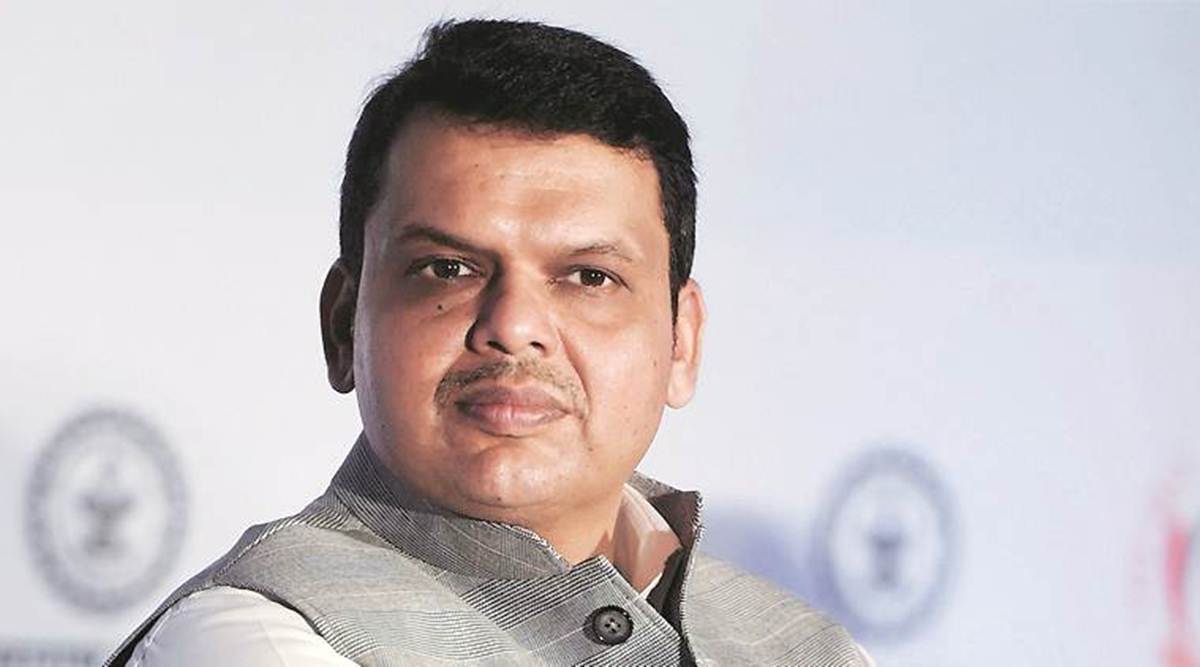 The scheme, a personal favourite of then chief minister Devendra Fadnavis, was launched in December 2014, with a goal of making Maharashtra a drought free state by 2019. An annual target of drought-proofing 5,000 villages was undertaken.
The scheme, a personal favourite of then chief minister Devendra Fadnavis, was launched in December 2014, with a goal of making Maharashtra a drought free state by 2019. An annual target of drought-proofing 5,000 villages was undertaken.The Comptroller and Auditor General of India (CAG) has slammed the implementation of the multi-crore Jalyukt Shivar Abhiyan, a scheme that was considered as the pet project of the previous Devendra Fadnavis regime in Maharashtra.
In a report tabled at the state legislature on Tuesday, the CAG stated that “despite spending Rs 9633.75 crore, the Abhiyan (mission) had little impact in achieving water neutrality and increasing ground water level”. The report added that there was “lack of transparency” in the execution of works and inadequate monitoring by the state water conservation department.
The scheme, a personal favourite of then chief minister, was launched in December 2014, with a goal of making Maharashtra a drought free state by 2019. An annual target of drought-proofing 5,000 villages was undertaken.
The CAG’s performance audit dates to a period when the Fadnavis government was still in power – between January and December of 2019. The findings were submitted to the government in June this year.
According to the report, the scheme catered to 22,586 villages and 6.41 lakh works were undertaken in all. Of these, 98 per cent or 6.3 lakh works were completed at a cost of Rs 9,633.75 crore.
But the audit found that in 83 of the 120 villages selected for the study, the storage created was not sufficient to meet the water requirement, as indicated in the village plan for drinking and irrigation. It also stated that in 37 of the 83 villages, the shortage was due to less storage created than planned. In most such cases, the shortfall was more than 20 per cent.
“The reasons for the shortfall were curiously absent from the relevant reports and were not ascertained by district authorities, defeating the objective of drought-free villages,” the CAG observed.
Slamming officials for the shoddy implementation, it said that the “district authorities did not get periodical reports to monitor the progress of the implementation”.
The CAG added that none of the 120 villages collected cess towards maintenance and repairs as envisaged in the scheme. “The government was to supplement an equal amount as collections subject to a maximum of Rs 2 lakh per year. An additional expenditure of Rs 2,617.38 crore has been incurred in six districts selected by CAG for survey,” it said.
Raising questions over the efficacy of the scheme, the audit also found that despite recommendations to the contrary, there was an increase in the digging of dugwells and borewells to the extent of 10 and 90 per cent, respectively. In several villages, the land under water-intensive cash crops also went up.
The report claimed that only 29 of the 80 villages, which were declared as water neutral, actually achieved the status. In the remaining 51 villages, the storage created was less but were declared water neutral nevertheless. Ten villages that were declared as “not water neutral” took no steps to improve water usage efficiency.
The report also said that of the 58 villages surveyed, 38 had seen no increase in groundwater level and the 22 that did witness an increase, saw a rise between 4 per cent to 15 per cent.
Only 21 per cent of the villages had undergone third party evaluation as prescribed under the scheme. The third party audits at Jawhar and Mokhada, for example, found major problems with structural soundness of the projects.
The CAG observed that the authorities hadn’t uploaded pictures of ongoing works at various stages for maintaining transparency.
When contacted, Fadnavis said, “It is not an indictment. There are recommendations as usual in these reports. The scheme would have been more successful had the current government allowed its continuation, but it was stopped midway.”